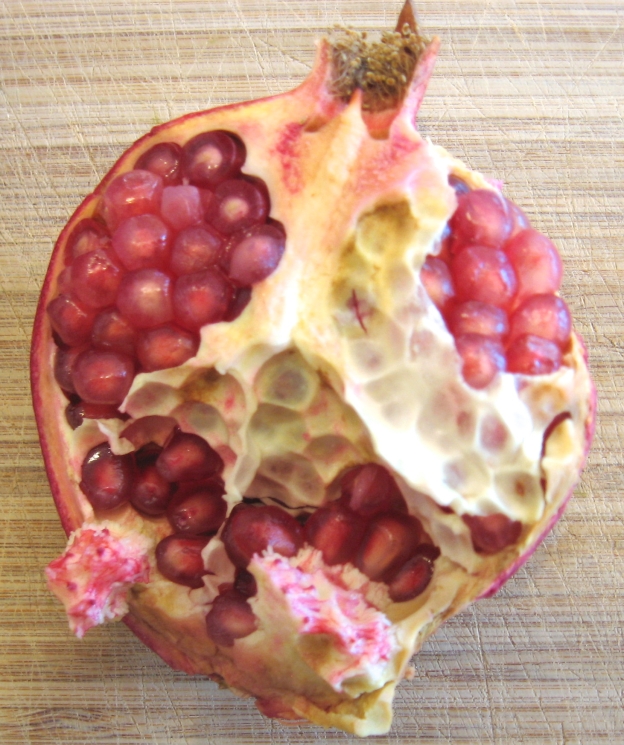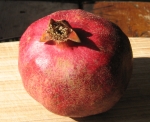Jeanne walks you through the botany you need to know to understand pomegranate fruit structure. Jeanne’s definition of “need to know” is arguably a bit broad and includes a brief tour of the many different structures plants modify in order to entice herbivores, and at least one goddess, to disperse seeds.
Pomegranates (Punica granatum, family Lythraceae, rosid order Myrtales) were one of the earliest domesticated plant species. According to ancient Greek mythology, they even predate the seasons. The story goes that Hades, god of the underworld, kidnapped his beloved Persephone, daughter of Demeter, goddess of the harvest. Demeter’s grief over Persephone’s disappearance caused the crops to wither and wreaked havoc with humanity. The plight of the starving masses coerced Zeus to convince Hades to return Persephone to her mother. Before she left the underworld, however, Hades tricked her into eating a pomegranate seed, which bound her to evermore spend part of the year with her happy mother, during which time plants flourished, and part of the year in the underworld, during which time plants go fallow. Thus, seasons arose.
We can hardly blame poor Persephone for finding pomegranate seeds irresistible. They look like faceted jewels and have a refreshing, tangy sweetness and a satisfying crunch. We have an additional reason to be drawn to pomegranates: even if they can’t help us understand the seasons, deciphering the structures of the beautiful pomegranate fruit helps us understand the diversity of mechanisms plants use to entice animals, including humans, to disperse seeds. The delicious, nutritious or fibrous attractive structure is payment for the animal’s labor. As you will see in this post, there is no single anatomical recipe for creating the colorful, fleshy and/or juicy reward for a seed-dispersing herbivore, mortal or otherwise. Many of the myriad flower, fruit and seed structures are variously promoted to the role of what is colloquially thought of as “fruit.” Continue reading


